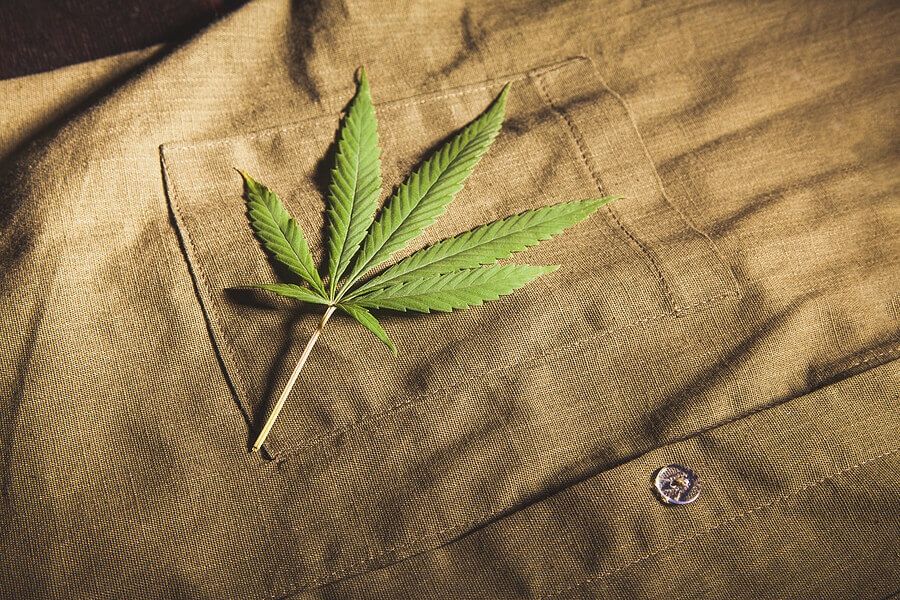Free Tips On Choosing Bamboo Clothing
Wiki Article
Why Is Hemp More Durable, Biodegradable And More Regenerative Than Cotton?
Hemp is more biodegradable than cotton, and is also considered robust. This is because of the inherent qualities of hemp as well as the way it is cultivated. Here's why- Biodegradability-
Natural Fiber Natural Fiber Hemp is a natural plant fibre, which is biodegradable. Fabrics and clothes made of hemp break down in time. That means they are returned to the earth without leaving any waste. Contrast this with synthetic fibers such as polyester, which could take hundreds of year to decompose.
Lack of Synthetic Additives- Hemp textiles typically do not contain synthetic additives or chemical treatments that inhibit biodegradability. However, certain cotton textiles can be treated with synthetic chemicals, like certain dyes or finishes, which could slow down the biodegradation process.
Durability-
Hemp fibers can be distinguished by their strength and endurance. Hemp clothes and textiles are less prone to tear and wear and last longer when compared to other cotton products. This makes hemp clothes able to stand up to many more washes and wear cycles, without showing evidence of wear.
Less Prone to PillingLess prone to pilling Hemp fabric is less susceptible to pilling (the formation of small fuzzy balls that form on the surface of the fabric) compared to cotton. This contributes to their durability and high-quality.
Regenerative Agriculture-
Soil Health- Hemp cultivation is regenerative when practiced responsibly. Hemp has a deep root structure that can prevent compaction and soil erosion. It also helps enhance soil health through aerating and enhancing microbes' activity. Regenerative properties could make the land more to be suited for future cropping.
Low environmental impact Sustainable hemp cultivation methods typically use a minimal amount of pesticides or herbicides to limit environmental harm. Contrary to conventional cotton farming can result in the degradation of soils and pollution of water because of its dependence on synthetic chemicals.
Water Efficiency-
Hemp generally requires less water than cotton. Due to its drought-resistant properties, it can be grown with little or no irrigation. This makes it an excellent choice for areas with limited water supplies.
Hemp can be integrated into crop rotations that improve soil health by reducing possibility of soil diseases and depletion. Crop rotation isn't as prevalent in the traditional cotton farming.
Versatility- Hemp is a great material for a wide range of applications, such as clothing, textiles papers, paper, building materials and many more. Hemp's versatility means that it can be used to help support many industries with sustainable practices that are regenerative and sustainable.
While hemp does offer these benefits, it is also important to know that both hemp and cotton can be produced sustainable or not, based on the practices of farming and processes used. Choosing hemp products made using eco-friendly and ethical methods will increase the environmental benefits. Organic cotton products are an effective way to lessen the impact on the environment of conventional cotton. Have a look at the most popular hemp clothing info for more tips including hemp apparel, patagonia double knee pants, hemp mens jeans, hemp mens jeans, hemp jeans, hemp denim, hemp fabric, mens hemp t shirts, patagonia hemp pants, hemp tee shirts and more.

How Can Hemp Be Used To Improve The Carbon Sequestration Process And Sustainably?
Hemp fibers are a great source of carbon sequestration, sustainability, and crops rotation in many ways which makes them an eco friendly choice for both agriculture and textile production Carbon Sequestration
Hemp is a quick-growing plant. It is able to mature in just 70 to 120 days, according to the variety and the conditions. In order to speed up their growth, hemp plants absorb CO2 from the atmosphere as part of photosynthesis. The carbon uptake is a major contributor to carbon sequestration through reducing the CO2 levels in the atmosphere.
Hemp produces plenty of biomass. The plant's tall and dense foliage yields a substantial quantity of organic substances. If this biomass is used in soil for different purposes, it can help to increase the amount of organic carbon.
Sustainability:
Hemp needs less synthetic pesticides, herbicides, and herbicides than many other crops, such as cotton. The hemp's natural resistance to numerous diseases, pests and weeds reduces the use of chemical interventions. Organic hemp farming is a sustainable method of cultivating hemp since it does not use synthetic chemicals.
Hemp has a high water efficiency, compared with other crops that require a lot of water like cotton. It is therefore more sustainable in regions that have limited water resources.
Hemp roots are long and help improve soil quality. The hemp's roots help to prevent soil erosion, by stabilizing the structure of soil and decreasing runoff. Hemp farming can increase soil microbial activity, increasing the fertility of soils and the cycle of nutrient.
Hemp is a great option to incorporate into crop rotation systems. Crop rotating involves the alternating of different crops within a single field. This helps break pest and disease cycles and reduce soil loss and enhance soil structure. The role of hemp in crop rotation is important for the sustainability of farming.
Rotation of the crop
Hemp is a versatile crop that can be used in rotation alongside vegetables, grains and legumes. This can help farmers maintain the soil's quality, reduce the risk for pests, diseases, and other crop-specific problems as well as promote a balanced process of nutrition.
Hemp roots penetrate soil and help aerate it which decreases compaction and increases water infiltration. The soil structure improves after a hemp harvest that benefits other crops.
In summary hemp fibers can help improve carbon sequestration methods sustainable, crop rotation, and water efficiency due to their rapid growth biomass production and low chemical requirements. These characteristics make hemp cultivation an environmentally sustainable and regenerative agriculture practice. Furthermore, the resultant fibers are a green choice for textiles and other uses. See the best hemp clothes for more advice including organic hemp hoodie, hemp golf shirts, nomad hemp clothing, hemp button down shirt, hemp trousers, patagonia iron forge jacket, 100 hemp clothing, organic hemp underwear, patagonia hemp overalls, hemp long sleeve shirt and more.

What Are The Advantages Of Bamboo Clothing For Comfort And The Environment?
Bamboo clothing is a great option for comfort as well as the surroundings.
Softness- Bamboo is renowned for being exceptionally soft. It is smooth and silky to the sensation. Bamboo clothing is popular for its luxurious softness, which makes it an excellent choice for activewear, loungewear and intimate apparel.
Bamboo fibers are known for their ability to draw moisture away and also breathe. They have micro-gaps that allow air to circulate, keeping your body cool and comfortable during hot weather. The moisture wicking properties of the fabric assist in removing sweat from your skin. This can reduce the sensation that your clothing is damp.
Bamboo clothing has excellent properties to regulate temperature. Bamboo clothing keeps you warm during cooler temperatures by capturing warm air close to your body. It can also help you to remain cool during hot temperatures because it lets the excess heat and moisture to escape. Bamboo can adjust to a variety of temperatures, it's perfect for all seasons.
Hypoallergenic- Fabric made from bamboo is gentle and hypoallergenic. It is less likely to cause allergies or cause irritation. This makes it an ideal choice for those with skin sensitivities and allergies.
Bamboo fibers possess natural antimicrobial properties which can help in preventing the growth of odor-causing bacteria. This is a factor in the freshness and ease of wearing bamboo clothing even during exercise.
Environment-
Sustainability- Bamboo is a highly sustainable and renewable resource. It is one among the fastest growing plants and requires a small amount of water. No pesticides, herbicides or other chemicals are required to cultivate it. Bamboo is harvested without killing it, because its root system regenerates.
Bamboo is a natural water-efficient plant. Bamboo can flourish with little irrigation, and is often cultivated using only rainwater, reducing the environmental impact that comes with the use of water in agriculture.
Biodegradability. Bamboo clothing is biodegradable. They naturally decay over time. This feature reduces waste that is not biodegradable textiles dumped in landfills.
Carbon Sequestration. Bamboo can be used to sequester CO2 during its rapid growth. Bamboo cultivation is an absorber of carbon dioxide, reducing the levels of greenhouse gases, and also aiding in reducing the effects of climate change.
Chemical Reduction. The manufacturing process for Bamboo Fabric usually requires fewer treatment and processes as compared to other types of textiles.
Closed Loop Production- A few bamboo fabrics are produced with closed loop systems which make use of recycled chemicals and water, thus reducing the amount of waste.
You should be aware that the impact of your actions on the environment on bamboo clothing will vary according to whether it's produced using sustainable and responsibly managed bamboo forests. To reap the maximum environmental benefits, consumers must look for bamboo clothes that are made using sustainable and ethical practices. Have a look at the best view website on bamboo clothing for site examples including bamboo baby pajamas, mens bamboo boxer shorts, bamboo button down shirts, yala pajamas, bamboo tee shirts, women's freefly apparel, bamboo tee shirts mens, bamboo infant clothing, bamboo tee shirts mens, bamboo brand jeans and more.
